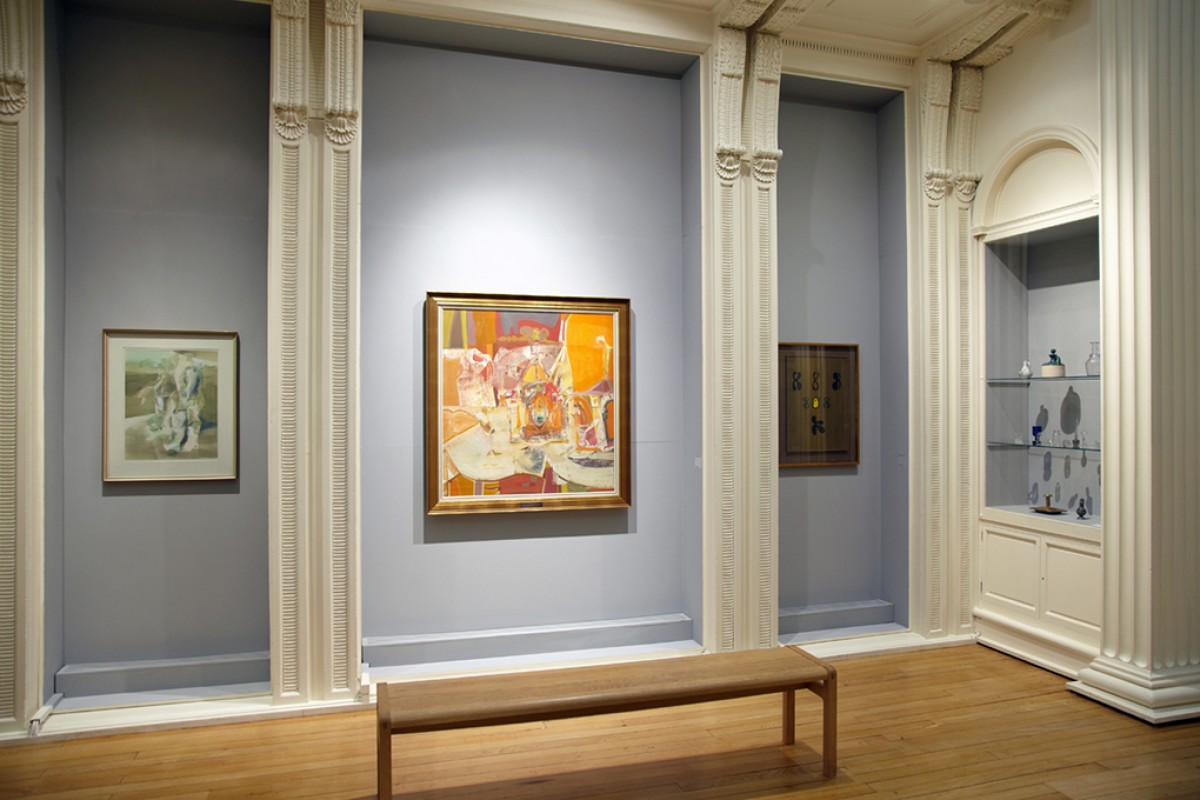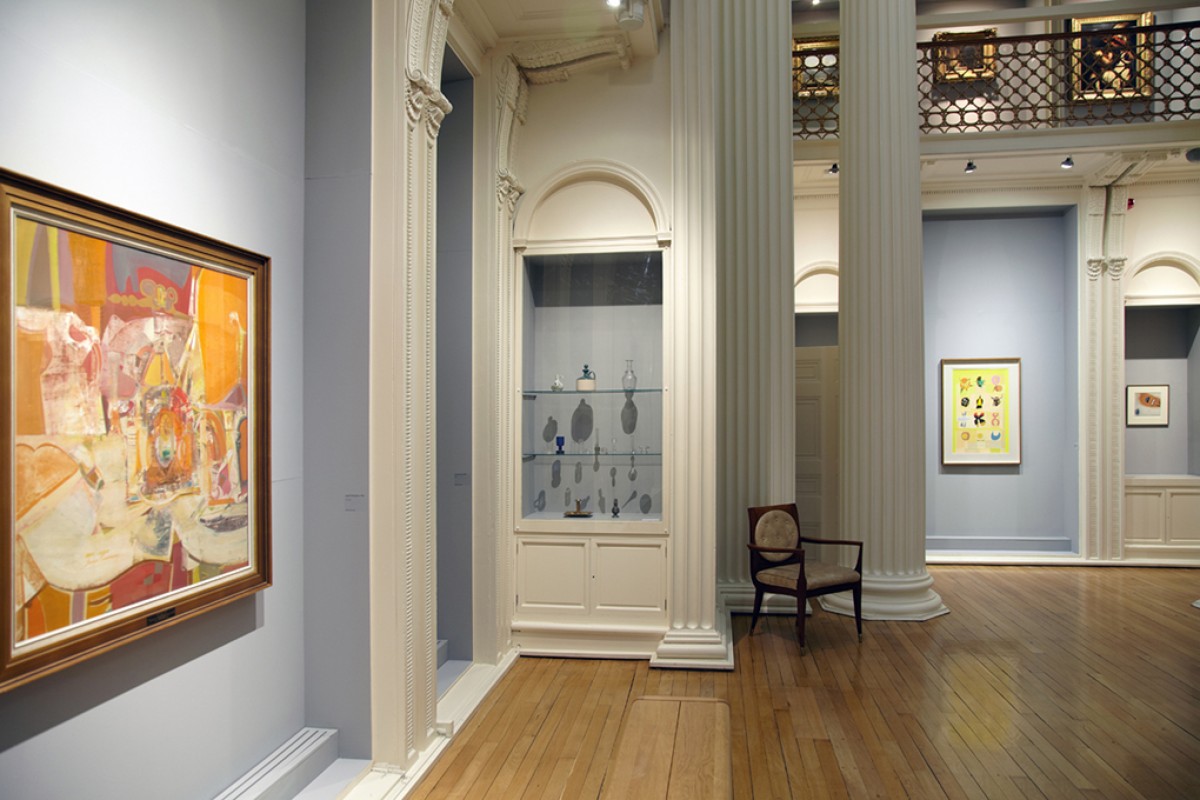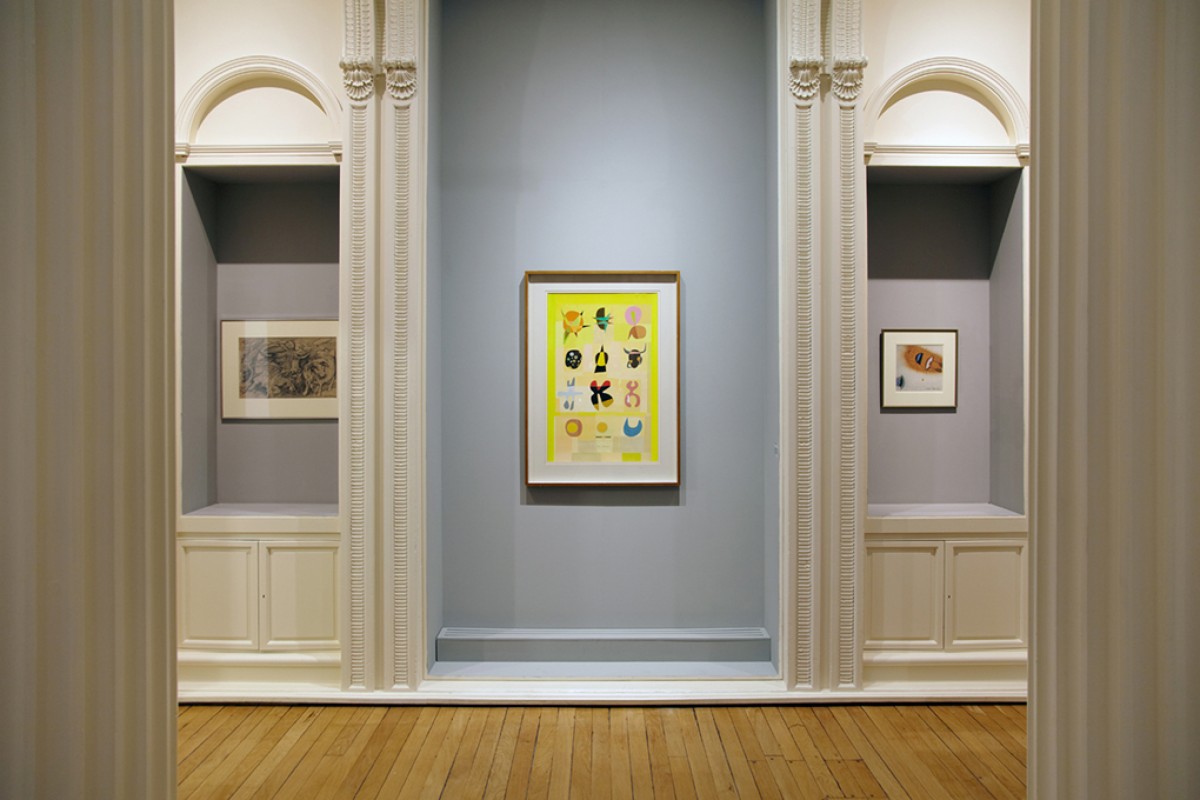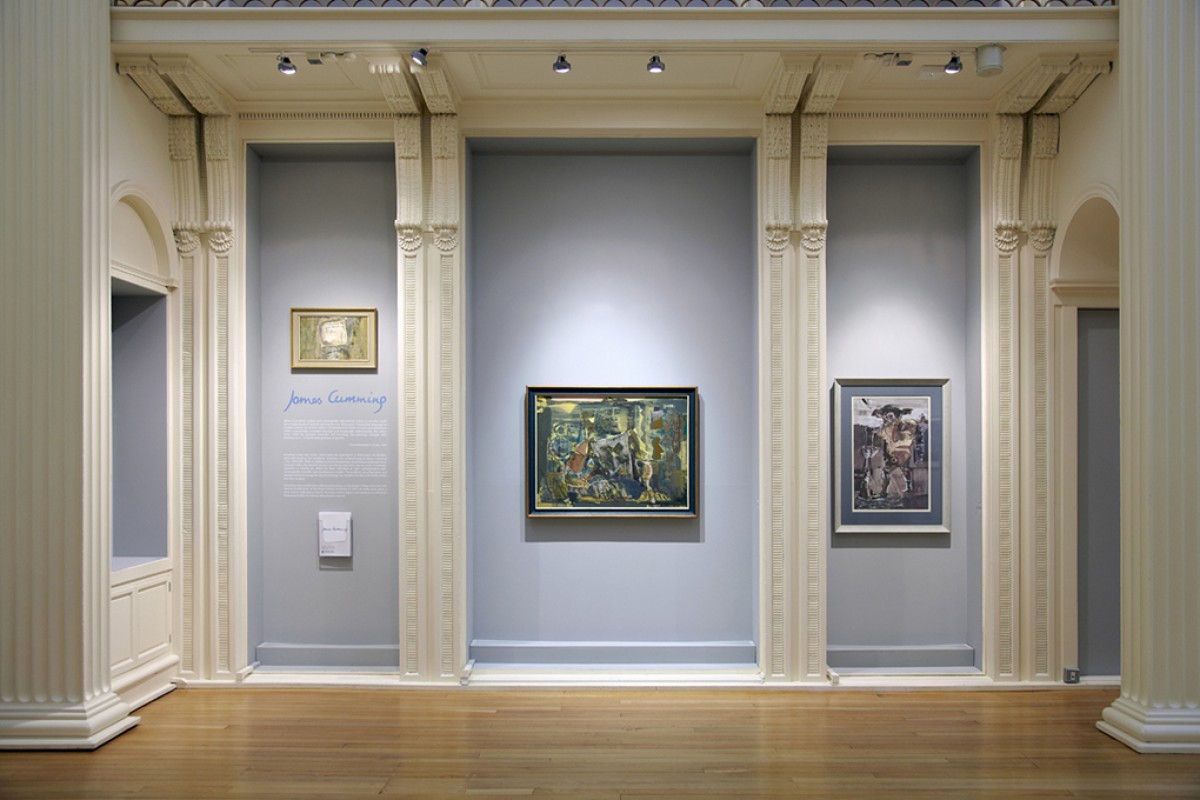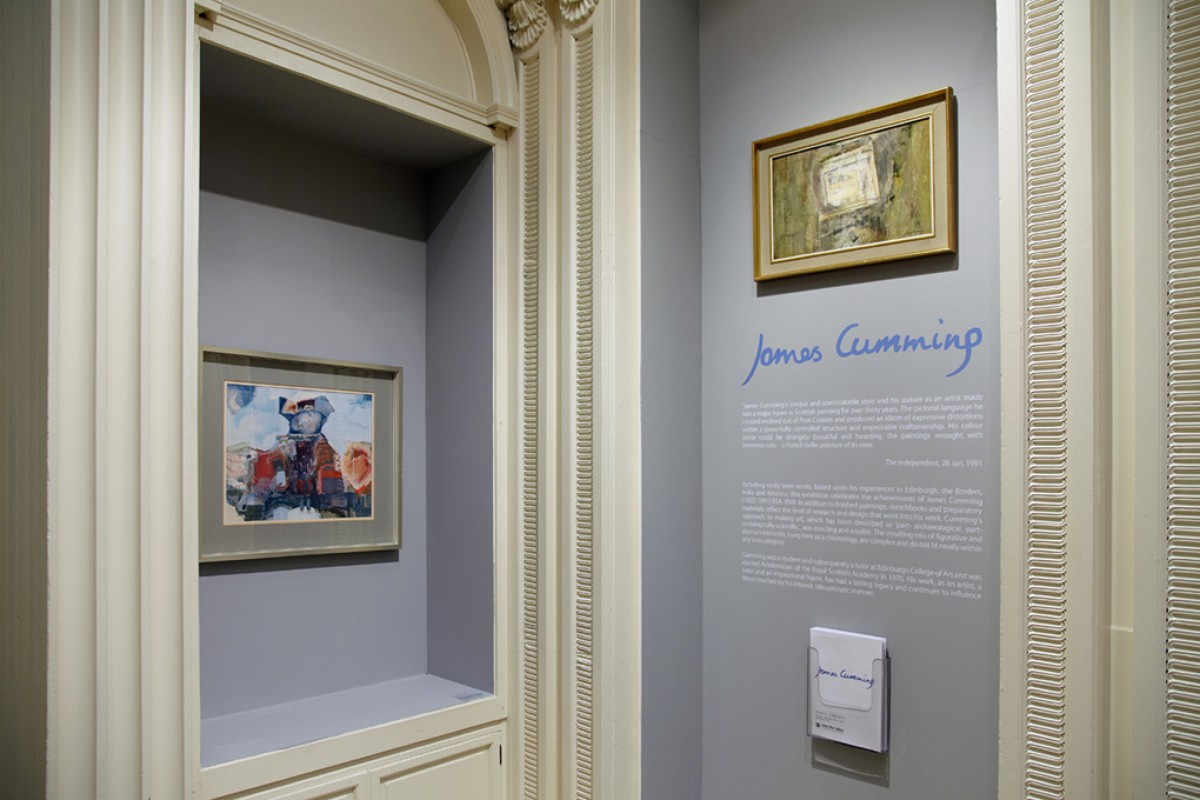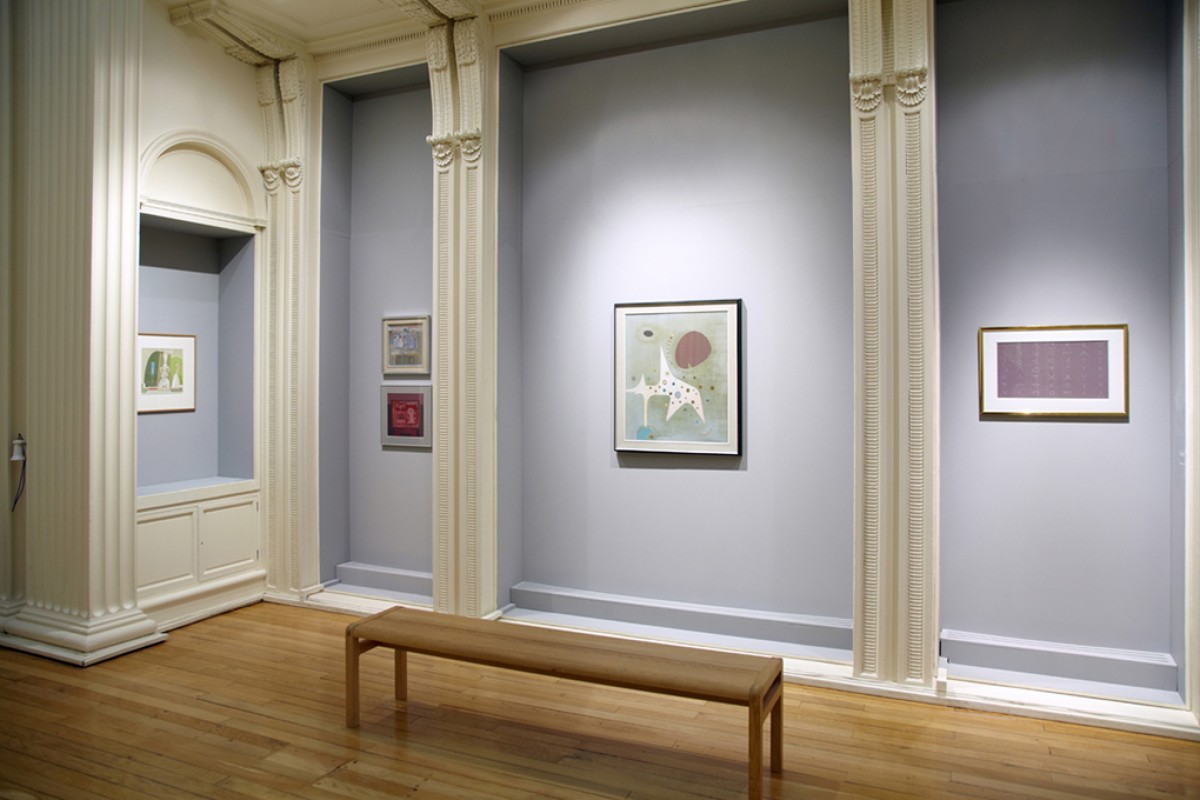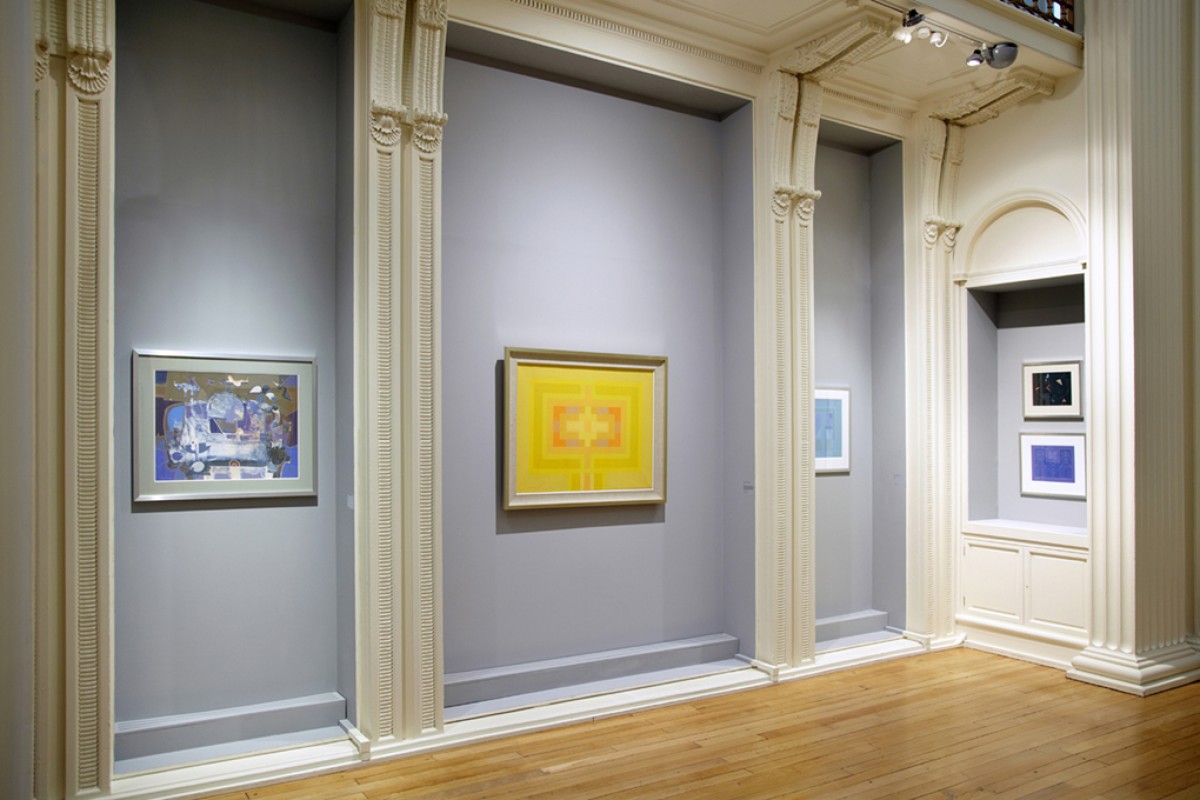James Cumming
-

Including rarely seen works, based upon his experiences in Edinburgh, the Borders, India and America, this exhibition celebrates the achievements of James Cumming (1922-1991) RSA, RSW. In addition to finished paintings, sketchbooks and preparatory materials will reflect the level of research and design that went into his work. Cumming’s approach to making art, which has been described as ‘part- archaeological, part- sociologically-scientific’, was exacting and erudite. The resulting mix of figurative and abstract elements are complex and beautiful and do not fit neatly within any one category.
Cumming was a student and subsequently a tutor at Edinburgh College of Art and was elected Academician of the Royal Scottish Academy in 1970. His work, as an artist, a tutor and an inspirational figure, have had a lasting legacy and continue to influence those touched by his intense, idiosyncratic manner.
Supported by Year of Creative Scotland 2012, the Royal Scottish Academy and the Scottish National Gallery of Modern Art.
Exhibition Guide
Published on the occasion of 'James Cumming' at Talbot Rice Gallery, The University of Edinburgh.
Texts are available to view below or download .
"James Cumming’s unique and unmistakable style and his stature as an artist made him a major figure in Scottish painting for over thirty years. The pictorial language he created evolved out of Post-Cubism and produced an idiom of expressive distortions within a powerfully controlled structure and impeccable craftsmanship. His colour sense could be strangely beautiful and haunting, the paintings wrought with immense care - a French belle-peinture of its own.”
The Independent, 28 January 1991
Including rarely seen works this exhibition celebrates the achievements of James Cumming (1922-1991) RSA, RSW. In addition to paintings from every decade of his career, sketchbooks and preparatory materials reflect the level of research and design that enriched his work. Cumming’s approach to art, which has been described as ‘part-archaeological, part- sociologically-scientific’, was exacting and erudite. As art gallery of the University of Edinburgh, Talbot Rice is pleased to showcase the work of an artist, and tutor at Edinburgh College of Art, who was such a distinctive figure in Scottish art.
James Cumming was born and educated in Dunfermline. His studies at Edinburgh College of Art were interrupted by the Second World War when he trained as a pilot in Texas and flew missions to India. In New York he absorbed post-cubist painting, in Jaipur he looked at Indian miniatures. The painting titled Laredo, Texas (1986) depicts the Texan town from both within and without: as a maze of strips and plazas deserted in the baking heat, but also as if seen from the skies in Cumming’s Dakota, each metaphor abstracted from memory decades later.
Cumming’s best-known artistic phase, in the early 1960s, came from a year and more in the Outer Hebrides. Other postgraduates who won travelling scholarships after the war spent them on a couple of months in Europe studying the old masters. Cumming chose the remote village of Callanish on Lewis, where the community is close and constantly aware of the past, embodied by the ominous standing stones on the outskirts. The artist lived with the crofters, taught their children, painted the local poachers, fishermen and worthies, among them men and women supposedly gifted with prophetic powers transmitted down the ages. In his paintings, the islanders become spectral figures, individual and yet mythic, one and continuous with the landscapes through which they pass. The Hebridean Boatman (1962) in his old plimsolls is pale as the sea light. Grey Kenneth (1960), his name in Gaelic, is a vision of the Brahan Seer, that long-dead islander said to have predicted the birth of Picasso and the discovery of North Sea oil centuries in advance. The Woman with Second Sight (1962) appears seated among the whitewashed crofts, defensive as a hermit crab. Her mysterious gift is embodied in her moon-like eyes.
At this stage Cumming had already hit on the technique he would refine throughout his career. His semi-figurative paintings are built up in veils of translucent colour, slow and painstaking glazes underpinned by pivotal details – buttons, fingernails, pinpricks of reflected light – and founded upon complex rhythmic structures. The Hebridean paintings were shown in Edinburgh, London and New York in the sixties but at the peak of their success Cumming suddenly switched subject. His neighbour, an Edinburgh surgeon, had introduced him to the new electron microscope. Always fascinated by origins and by microcosms – the sketchbooks are full of these connections, the movements of the solar system repeated in the spirals of a fir cone, and so on – he could literally see the world, now, in a grain of sand.
In paintings such as Ovule (1971) and Poised Encounter (c. 1970-1975), organisms scintillate on the surface of the painting like cells on a slide or planets in the sky. Gathering and dividing, they breed new forms and these invented bio-morphs each have an energetic character of their own. Also the glowing yellow Chromosomes (I) (1970) with its array of vital symbols, in the artist’s vision, each little figure has larger affinities - moons, animals, faces, the dancing K-shape in the middle, both hieroglyph and letter. It is a work of exaltation, in praise of what science had lately revealed: that the universal calligraphy turned out to be present even in the code of human life itself.
Music and medical science, outer space, myths and old movies: the diversity of Cumming’s interests is apparent even in this condensed selection of his work. But what connects everything is his commitment to drawing. The sketchbooks are a lifelong exploration of the immense variety of forms a single line can take, and Sumerian Source (1985) has its origins in the earliest form of writing, cuneiform script, beginning with the briefest of lines (a dot) and taking off in all directions. Cumming’s drawing is at its most minimal in geometric abstracts such as Laredo, Texas (1986) and Cathedrale Englouti (1987), where the mythical drowned cathedral is refined to bone white structure; and it is at its most romantic in the still lives.


